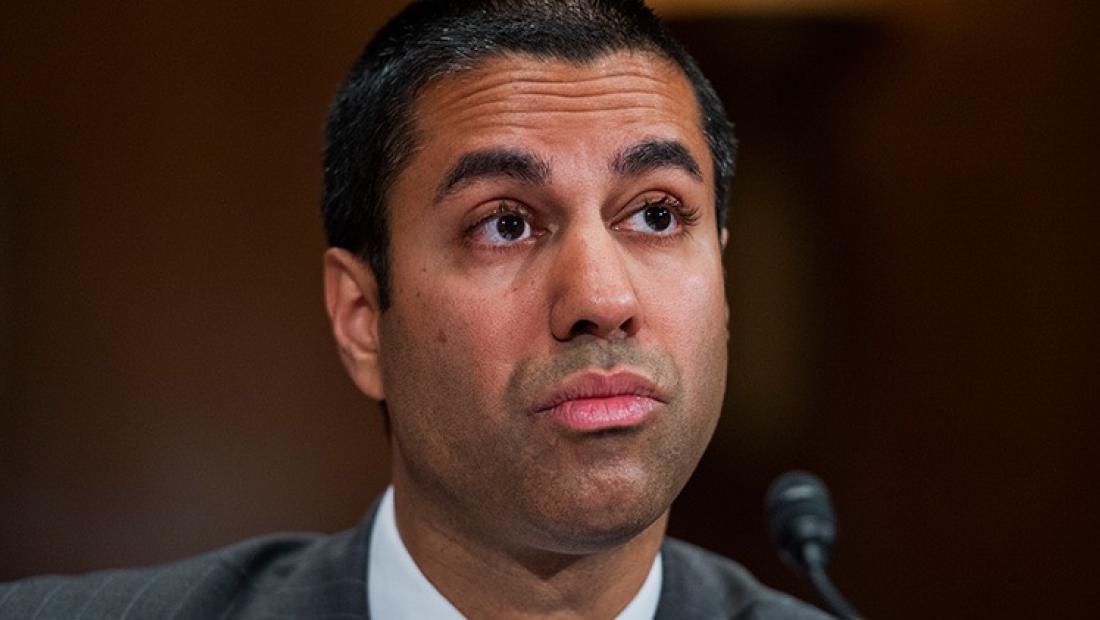Pai: USTelecom Research Shows FCC Broadband Policy Is Working

It was a mutual broadband expenditure admiration society Thursday (Oct. 18) as USTelecom released research showing increased broadband investment and FCC Chairman Ajit Pai released a statement spotlighting the new figures and said they confirmed his broadband policies are working.
Both Pai and USTelecom had argued that deregulating internet access would spur such growth and that the old Title II-based common carrier reg regime had depressed it.
According to USTelecom, broadband provider capital expenditures were $76.3 billion in 2017, up $1.5 billion over $74.8 billion expenditures in 2016.
The research brief is credited to U.S. Telecom VP for industry analysis Patrick Brogan.
"The 2017 increase comes after a two-year decline during which annual broadband capital expenditures fell a total of $3.2 billion, from $78.0 billion in 2014 to $74.8 billion in 2016," said Brogan in a blog about the research. "This spending dip began when the Federal Communications Commission (FCC) moved to impose common carrier regulatory classification—commonly known as Title II—on broadband providers in 2015. Growth returned after a series of pro-investment steps taken by the FCC and Congress, including the Restoring Internet Freedom Order, the tech transition order and tax reform. While many factors are at play, the parallel shifts in policy and capex suggest that policy expectations played a role, warranting additional analysis."
The tech transition order took a different approach to migrating from copper to fiber networks, an approach less regulatory than that under the previous FCC and thus more to the liking of USTelecom. "The tax reform bill lowered the corporate tax rate from 35% to 21%.
The broadband investment boost must have come in anticipation of the rollback of the net neutrality regs, since the Restoring Internet Freedom Order did not take effect until June of 2018.
Broadcasting & Cable Newsletter
The smarter way to stay on top of broadcasting and cable industry. Sign up below
FCC Chairman Ajit Pai trumpeted the findings in a statement, but attributed the boost to his general regulatory approach rather than any particular action.
“Since my first day on the job, this agency has been focused on cutting through the regulatory red tape and increasing broadband investment, most importantly in rural America where the digital divide remains all too real," he said. "Today’s report confirms that the FCC’s policies to promote broadband deployment are working. After internet service providers reduced new investments in 2015 and 2016 under the prior Administration’s regulatory approach, broadband investment increased in 2017 by $1.5 billion over the previous year. That’s real progress for American consumers, and another step toward better, faster, and cheaper broadband for all Americans.”
The data is for wireline, wireless, and cable broadband providers and comes from financial statements as well as research (for comparison) from United States Census Annual Capital Expenditures Survey, the Yankee Group Global Capex Forecast 2010, the Skyline Marketing Capex Report 2010, data from the Cellular Telecommunications & Internet Association (CTIA), and New Paradigm Resources Group. Cable data came from NCTA-The Internet & Television Association).
Contributing editor John Eggerton has been an editor and/or writer on media regulation, legislation and policy for over four decades, including covering the FCC, FTC, Congress, the major media trade associations, and the federal courts. In addition to Multichannel News and Broadcasting + Cable, his work has appeared in Radio World, TV Technology, TV Fax, This Week in Consumer Electronics, Variety and the Encyclopedia Britannica.

